Introducing the 500 Year Archive
Welcome to the 500 Year Archive guide which will walk you through the basics of using the website. The 500 Year Archive is an online research tool designed to assist researchers by helping them get to grips with the sources they need. Currently the focus of the project is the KwaZulu-Natal and its adjacent regions. The resources primarily concern the five hundred years which preceded the advent of European colonialism in the area.
The 500 Year Archive houses a diverse array of texts, images, photographs, botanical material, sound recordings, and excavated archaeological objects. Its materials are drawn from local and international institutions such as universities, museums, libraries, and even private sources. It includes a growing collection of early published texts, many of them in isiZulu and other African languages.
Cognisant of the effects its custodianship has on the materials themselves, the 500 Year Archive strives to make visible all aspects of its curatorial interventions, such as the titling and organisation of the material. In addition, the 500 Year Archive takes care to record the custodial histories of the materials it convenes.
Using the 500 Year Archive
Before you start browsing the site, take a moment to familiarise yourself with a few of its features. The top right-hand corner of the home page offers a clipboard option which lasts for the duration of a single session.

There are also a few handy links and an option to read about the FHYA, the project responsible for the creation of the 500 Year Archive.
You can also click the ‘Login’ button and then ‘Register’ as a 500 Year Archive user. This will enable you to input information and add materials.
After filling out some basic information, check your email for a confirmation notice of your registration. If you did not receive this email, be sure to check your spam and junk mail folders.

Once you have logged on successfully, you can update your password and make changes to your profile by selecting your username at the top right-hand corner of the screen.
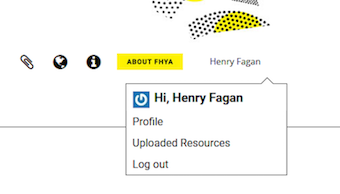
Now that you’ve registered, you will be able to add comments at the bottom of any page. Users are encouraged to annotate our information by adding details, supplying alternatives or comparisons, correcting errors, offering translations, recommending publications, or providing links. You can also upload related multimedia to share with our community of users.
Bear in mind that comments are subject to a moderation process, which ensures that comments are not of a racist, homophobic, transphobic, sexist, or ableist nature. Users must also abide by our privacy policy, which can be viewed here.
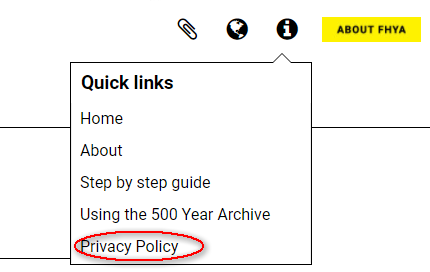
Getting Started
The home page has its own ‘Browse’ button accompanied by a separate search bar. The ‘Browse’ button allows users to look at the material separated into the categories of ‘repositories’, ‘archival descriptions’, ‘makers and shapers’, ‘additional resources’, ‘user comments’ and ‘digital objects’.
The search bar allows users to search for specific resources simply by typing in what it is they’re looking for and then hitting the ‘enter’ key to see the most relevant results.

For example, these are the results you should see for Magema Fuze.
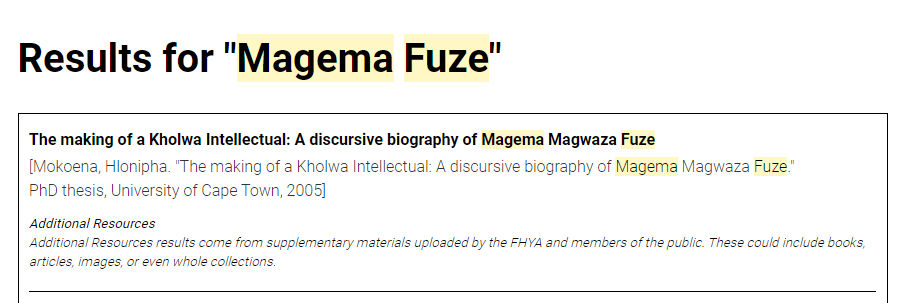
While the search bar offers users an easy way of navigating the 500 Year Archive’s resources, sometimes you will be interested in conducting a more refined search. You may, for example, want to examine the holdings of a particular repository. Bearing this in mind, let’s get familiarised with some of the other ways of navigating the 500 Year Archive’s resources.
Remember: if you get lost, you can always click the 500 logo to take you back to the home page.

Starting from the home screen, try selecting a ‘Browse’ option.
Begin by selecting ‘Repositories’, which enables users to view selections of numerous materials.
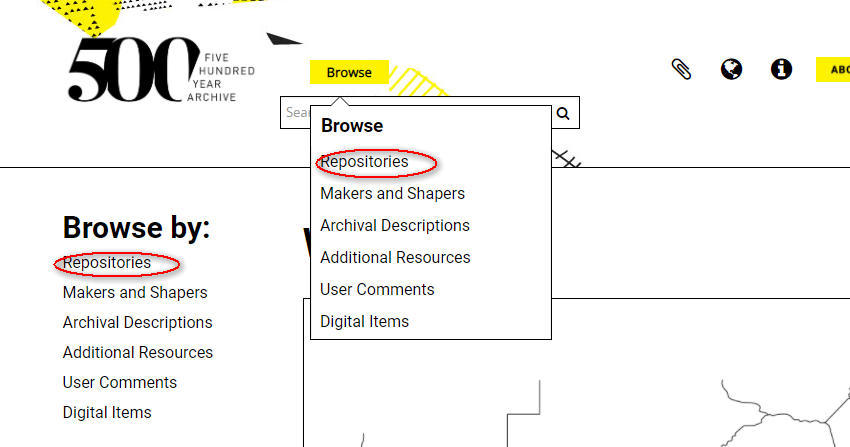
This is what you should now be seeing.
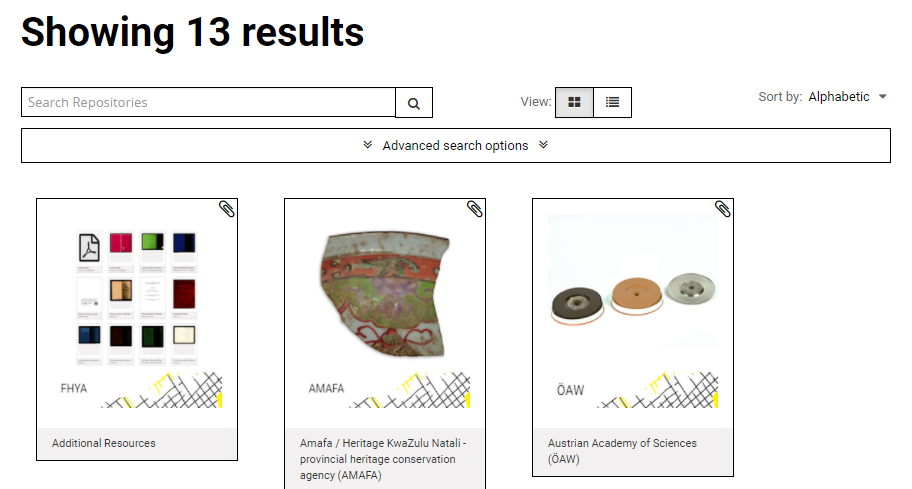
To view a particular repository, simply click on one – Amafa, for example – and then select the holding you would like to view from the menu on the left.
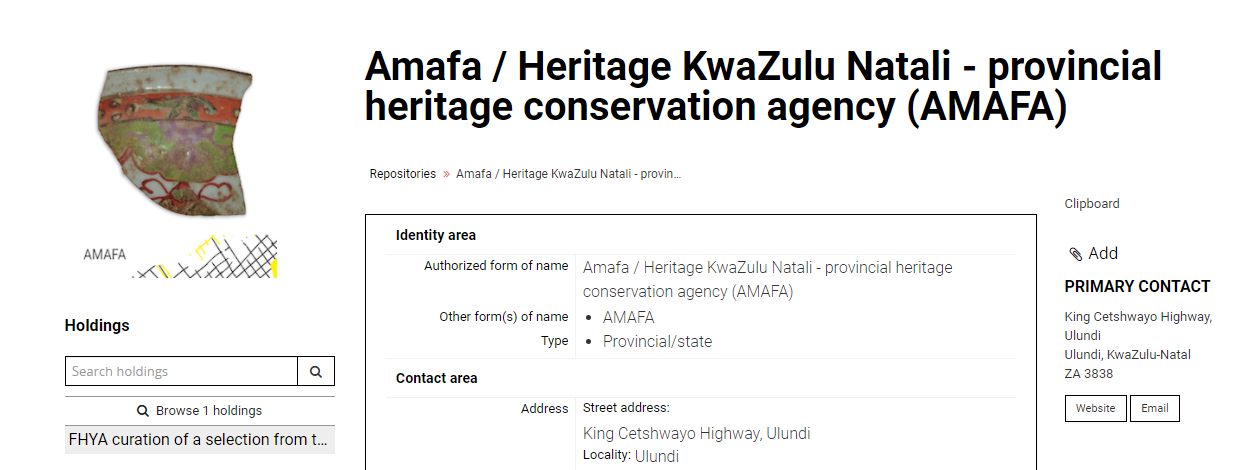
The Organisation of the Material
On the 500 Year Archive, materials are organised in a hierarchal structure, as follows:
Repositories > Selections > Series (and Subseries) > Files > Items
The structure mirrors the way files are stored on your computer. Let’s look at an example:

This screenshot outlines the organisation of the Amafa repository selected in our previous example.
To navigate through the holding’s material, click the small black folder icon and the arrows to hide or make the contents of a subfolder visible. You will notice that the ‘level’ of the material within the file structure is indicated in square parenthesis.
Try selecting one of the folders. On a ‘Series’ level, click on ‘Parkington, Cronin and Poggenpoel 1975’.
See if you can find the File ‘uMgungundlovu - Grindstones and associated items’. Once you have selected the File, if you scroll down; you will see a carousel in the middle of the screen displaying some of the Items this particular File contains.
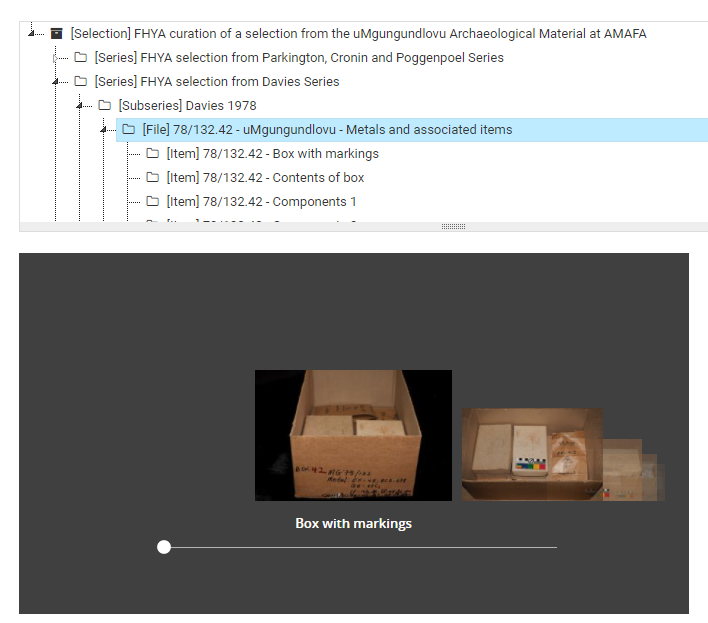
You can move between these Items by dragging the bar and you can click on an Item to view it in a new window. The carousel only displays the first few Items contained within a folder, but you can select ‘Show all’ at the bottom of the screen to see all of the Items the holding contains.
Remember, because we’ve selected the ‘uMgungundlovu - Grindstones and associated items’ File, we are currently on a ‘File level’. As we are on a ‘File level’, underneath the carousel, you can see the metadata of the File you have selected.
By metadata, we essentially mean the descriptive information of the material, including its date of creation, the date it entered into custodianship, and from where the material was sourced.
Now let’s try selecting an Item – click on ‘Component 1’.

On an ‘Item level’, in place of the carousel, you will see an image of the Item that you have selected. If you scroll down, you can view the Item’s metadata.
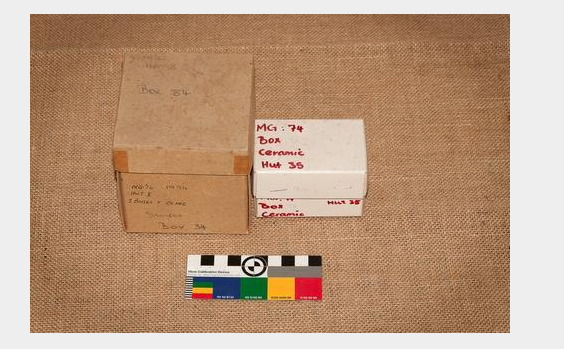
As you begin using the 500 Year Archive more regularly, you will get used to navigating between the Selection, Series, File, and Item levels with ease.
Makers and Shapers
Let’s go back to the home page.
A further ‘browse by’ option is to search by ‘Makers and Shapers’. Selecting this option generates a list of the people and organisations that have played some part in either producing or influencing a subset of material or an item.
The materials with which they are associated as either a maker or shaper are listed on the left. Paying attention to Makers and Shapers is important because their intervention impacts how we interpret the material in turn.
This is what you should now be seeing:
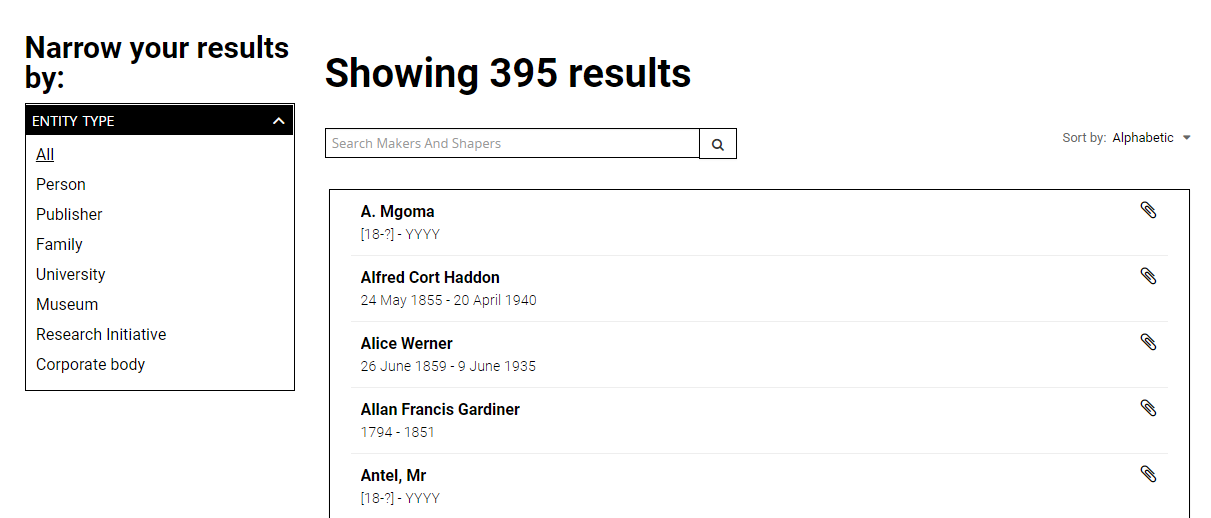
To narrow your search results, see the menu on the left and select a category. To view a specific maker or shaper, simply click on one. You can also use the search function to find someone specific.
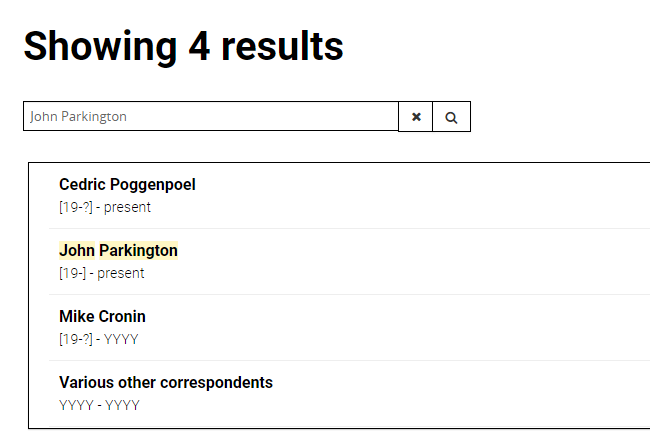
The metadata for John Parkington, who you may remember from your look through the Amafa repository, is now on screen.
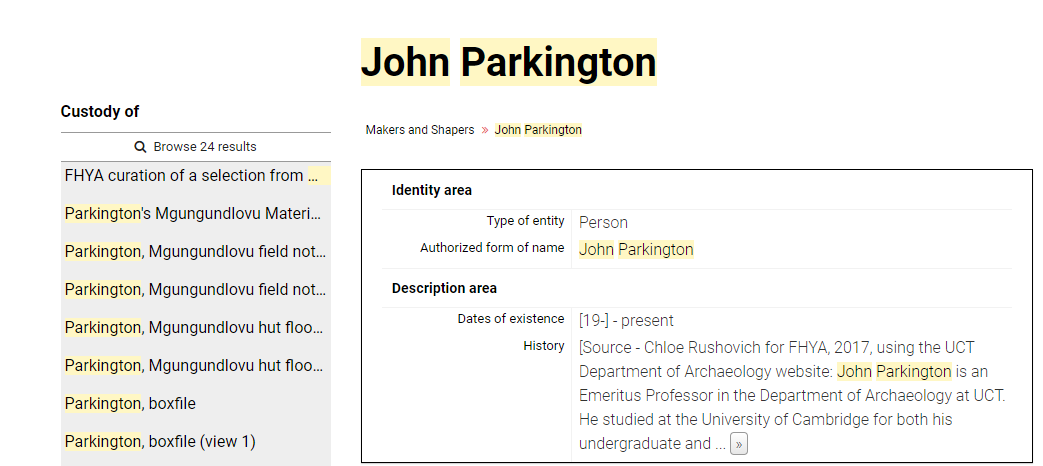
Let’s start from the home page once again.
Additional Resources
The ‘Additional Resources’ browse by option allows users to browse a selection of productions not sourced from a particular archive or collection. These are resources which have been added by the FHYA team or by a registered user because they are of interest. They include early publications by African writers, accounts by European travellers and missionaries in the region, Zulu-English dictionaries, academic studies and papers.
Users can also view what resources are available by going page by page at the bottom of the screen.
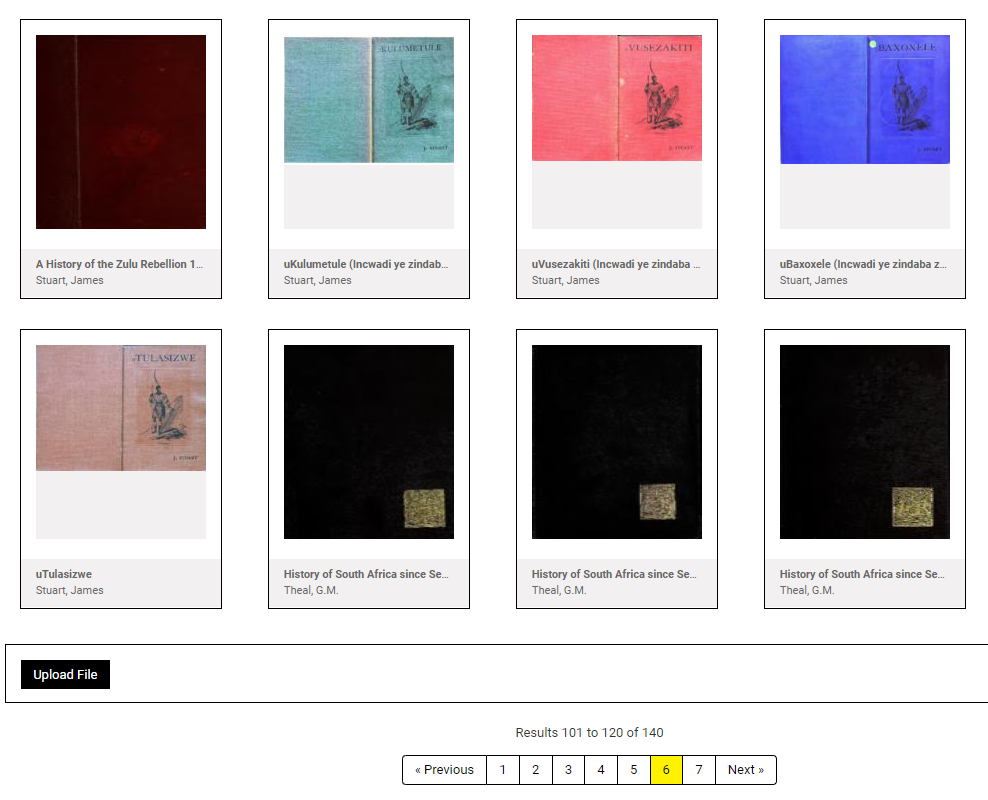
Wrapping Up
In time, it is anticipated that users will begin sharing and contributing their own resources to the 500 Year Archive and that these will become part of the material the 500 Year Archive convenes.
The ‘User Comments’ browse by option will enable users to easily keep track of the comments and contributions being made by other users.
The ‘Digital Items’ option offers users a different way of navigating between different repositories and 500 Year Archive selections of materials. It also allows users to search by ‘Media Type’ and by the ‘Level of Description’, which makes it easier to find the specific File or Item you need.
Becoming an Advanced User
You should now be acquainted with all the basics you need to begin navigating the site on your own.
Using the 500 Year Archive may take some getting used to, but once you get the hang of it, you’ll find it’s a convenient and rewarding tool for conducting your research.
Users who have learnt the basics are encouraged to consult our Advanced Guide.
The Advanced Guide offers more detailed information on the 500 Year Archive’s search and advanced search functions, the organisation of its material, mastering the website’s terminology, and the processes underlying commenting, contributing, and registration.
Visit https://fhya.org/using-the-fhya to learn all you need to know and become an advanced user.
